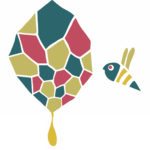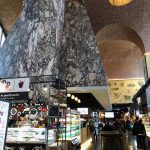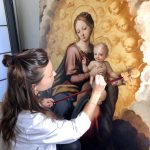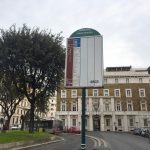The neighborhood of Esquilino, lies south of Termini train station and named for the Esquiline hill – one of the original 7 Roman hills. The Beehive’s first location was in this neighborhood and our Clover and Acacia guestrooms are in Esquilino. Officially, the current Beehive is in what’s known as Castro Pretorio – not as interesting and because I have such fond memories and loyalties to Esquilino, I call The Beehive’s neighborhood “Esquilino adjacent”.
Esquilino is a much maligned area, many guidebooks and journalists write it off considering it as only a place of budget hotels and convenient to the train station. For Roman residents, the last 15 years has seen a huge influx of immigrants from Asia and Africa which has indelibly changed the literal face of the neighborhood in both good and bad ways. Good in that it’s a joy to walk in that neighborhood and see non-Italian faces, clothes, hear different languages and smell non-Italian food smells. Bad in that many of the former mom and pop establishments sold out and were replaced by identical cheap trinket shops, chock-full of low quality imports all packaged in kilos and kilos of plastic.
There are many wonderful things about this neighborhood – things that are not very obvious to the casual observer, and my goal is to change that outlook by posting about the hidden gems located in this neighborhood. A recent post by my husband Steve kicked off that campaign.
On 20 April, Context Travel began its Tours in the Public Interestwith a visit to what’s known as the Auditorum of Maecenas. These tours will be held once per month with a Context docent who will lead these visits to little known, not-open-to-the-general-public, archaeological sites.
The Auditorium of Maecenas is located behind a wrought iron fence and locked gate on a very busy street in Rome, via Merluna near the basilica Santa Maria Maggiore. Years ago it was a neglected, downtrodden place surrounded by overgrown weeds, rubbish and the urine of street people masking any kind of treasure that was inside. Some care and with the rubbish and stench gone, now the auditorium is surrounded by a small and pretty manicured garden, but the gate is still locked. Context with its magic keys opened the door to a site that I had passed on a daily basis for years and so I was extremely curious to see what lay inside.
On this rainy, but warm day, docent Agnes Crawford, led our small group into the auditorium and as we decended the ramp into the semi-underground room – that’s when with Agnes’ knowledge, insight and guidance it became a walk back in time. Agnes’ detailed ruminations on the history of the area, the politics of the time, and theories on what exactly this site was exactly were interesting and evocative. Painted frescoes of garden scenes which were still visible and the idea that the auditorium was a bit of a cooling water garden for the elite wanting to escape the heat of Rome while looking out towards the Alban Hills had me imagining all kinds of halycon scenes of ancient Rome.




